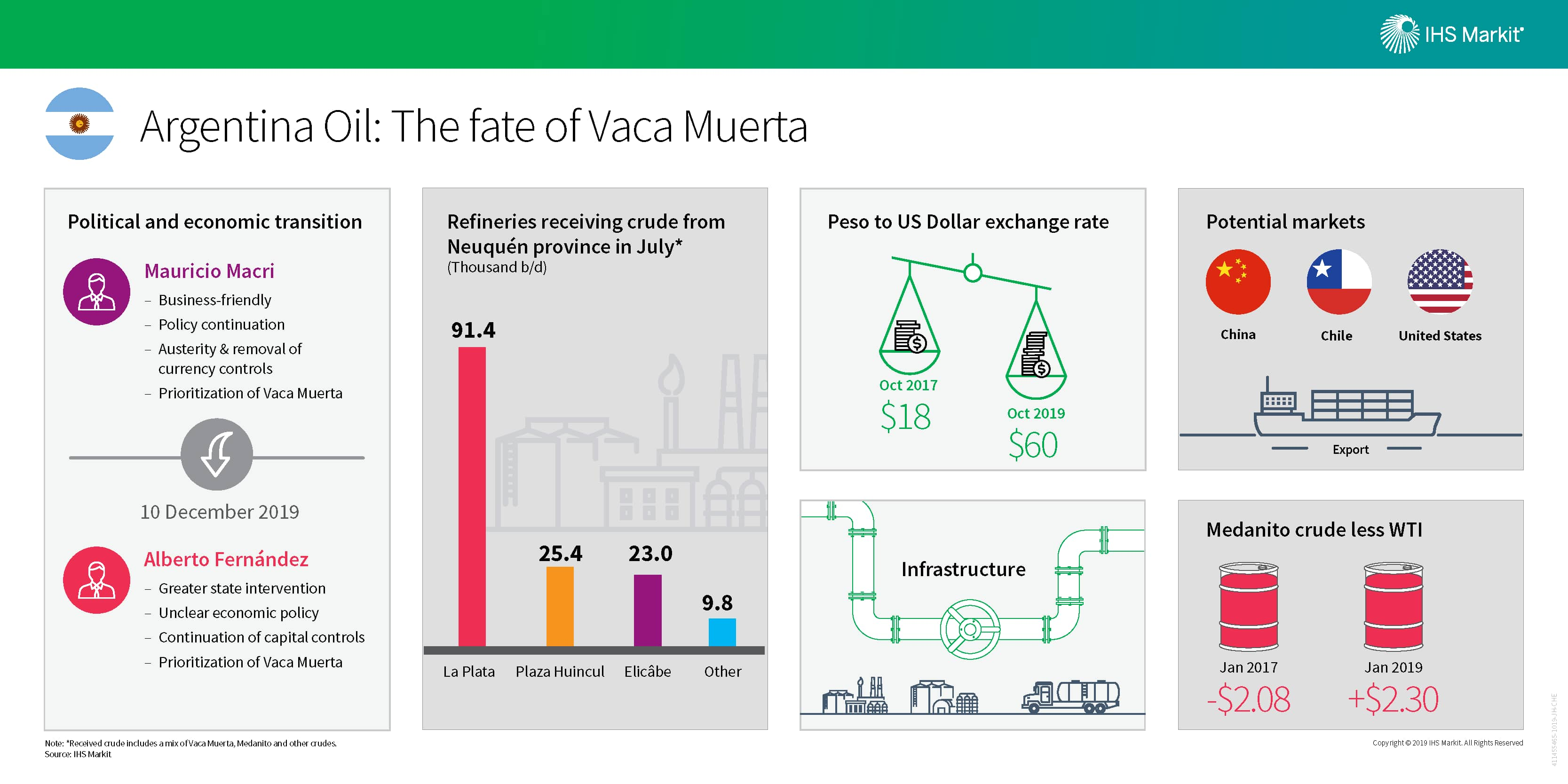Infographic: Argentina oil- The fate of Vaca Muerta
Following the resounding victory by Alberto Fernández over
President Mauricio Macri in Argentina's August primaries, it was no
surprise that Peronist candidate Fernández won the presidency on 27
October in the first round, with 48% of the votes. Argentina's
economy has been in a deep recession, with a current inflation rate
of 55% and a depreciated currency at 60 pesos per US dollar.
Although Fernández has been unclear in his policies, it is likely
that the economic and political environment in Argentina will
transition into one of greater state intervention and increased
capital controls. Lack of clarity also surrounds the impact that
running mate, former president Cristina Fernández de Kirchner, will
have on policies. During her presidency, Fernández de Kirchner
limited access to foreign investment by implementing protectionist
policies. With the transition to a populist regime as the backdrop,
Argentina's current environment begs the question: how will the
development of Vaca Muerta be affected?
Argentina's crude production was 504,000 b/d in August, one-fifth
of which came from the Neuquén Basin where Vaca Muerta is located.
With an estimated recoverable resource at 16.2 billion bbl of crude
oil, access to capital is key to successfully exploiting Vaca
Muerta's full potential. The temporary oil price freeze, enacted by
President Macri in mid-August to prevent runaway inflation, has cut
into operators' profit margins. It is likely that development will
be kept at a minimum until the price freeze is removed.
Furthermore, without a clear picture of energy policies from newly
elected president Alberto Fernández, investment in new projects
will be delayed. Currently, only about 4% of the play has been
developed. Energy Minister Gustavo Lopetegui has indicated that
Vaca Muerta will require about $5-10 billion in investment per
year. Investment includes the expansion of oil pipelines and new
refinery configurations. There are currently three main refineries
receiving crude from the Neuquén province, including Plaza Huincul,
which will only run Vaca Muerta's lighter Medanito crude in 2021,
after new installations and configurations have been made. With an
average API of 40, interest for the lighter Medanito crude will
likely come from the United States, Chile, and China, three markets
that have received Argentine crude on a regular basis within the
past year. Argentina's lighter Medanito crude properties allow it
to compete with WTI, giving it a premium in price for the majority
of 2019.
You may also be interested in...
Continue to gain valuable insight into IHS
Markit Latin America Energy coverage
This article was published by S&P Global Commodity Insights and not by S&P Global Ratings, which is a separately managed division of S&P Global.



